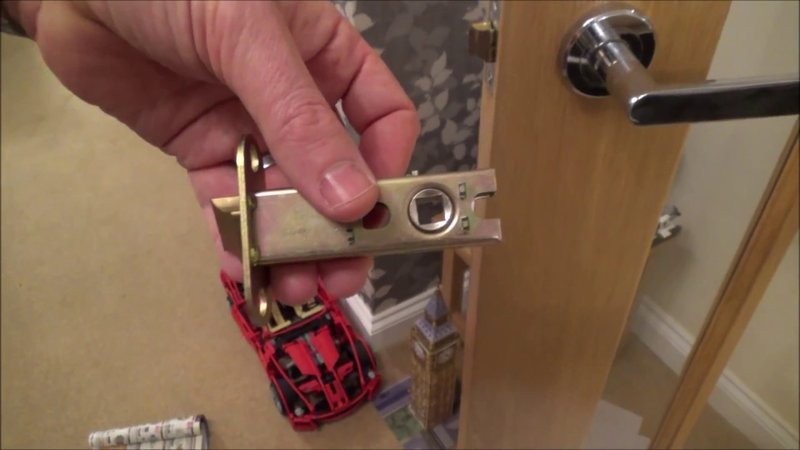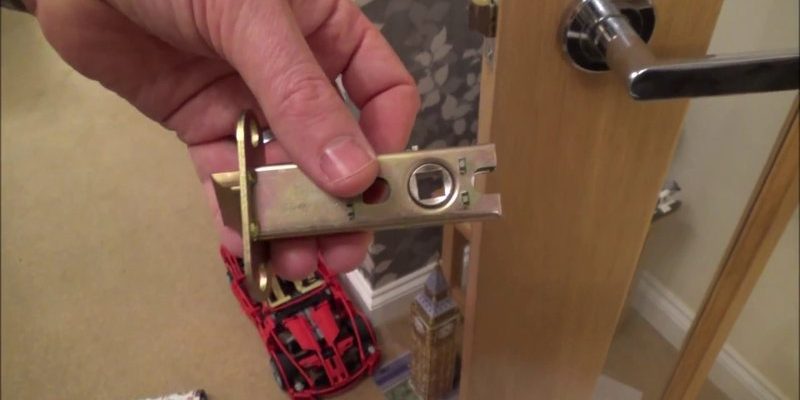
If you’re dealing with a door latch that’s giving you grief, understanding how that tiny spring works can be a game changer. Whether it’s a standard door latch or a more complex system on your favorite remote-controlled door, troubleshooting those little springs can save you a lot of hassle. So, let’s dive into how to troubleshoot that spring and get your door back to functioning smoothly!
Understanding the Door Latch Mechanism
To troubleshoot the spring inside a door latch, it helps to first understand its purpose. A door latch is designed to secure your door, providing safety and privacy. The tiny spring is responsible for the action of the latch itself, helping it snap into place and release smoothly when you turn the handle. When you turn the doorknob or press the latch, the spring compresses, allowing the latch to move in and out.
Think of the spring as a tiny assistant that keeps everything in order. If your latch isn’t working properly, that little helper might be the cause. When the spring loses its tension or gets stuck, it can lead to frustrating situations, like a door that won’t open or close properly. Keeping your latch in good working order is essential for the overall functionality of your door.
Identifying Common Issues with the Door Latch Spring
So, how do you know if the spring is the culprit? There are a few common indicators to watch for:
- Difficulty in Closing or Opening: If you feel resistance or if the latch seems to stick, it often means the spring isn’t functioning as it should.
- Unusual Noises: A squeaking or grinding sound every time you operate the latch can signal that the spring is either worn out or needs lubrication.
- Visible Damage: Sometimes, you can spot an issue by looking closely at the latch. If the spring appears bent or broken, it clearly needs replacing.
These issues can often be frustrating, but they’re typically fixable. Identifying the problem early can prevent more extensive damage and save you the hassle of a full door latch replacement later on.
Disassembling the Door Latch to Access the Spring
Now that you’ve identified some common latch issues, the next step is to access the latch mechanism itself. This process can sound daunting, but it’s pretty straightforward. Here’s how to do it:
1. Gather Your Tools: You’ll need a screwdriver, a flashlight, and possibly a pair of pliers. Simple tools make this job a lot easier.
2. Remove the Door Handle: Start by unscrewing the screws that hold the doorknob or handle in place. Be careful not to lose any screws, as they can be tiny.
3. Take Out the Latch Mechanism: Once the handle is removed, you’ll see the latch assembly. Typically, there are screws holding it in place. Remove those screws and gently pull the latch mechanism out.
With the latch out, you can see the spring clearly. This is where you can start troubleshooting the tiny spring that might be the source of your problems.
Inspecting the Spring for Damage
Once you have the latch mechanism out, it’s time to inspect the spring. Here’s what to look for:
– Check for Breaks or Bends: Inspect the spring carefully for any visible breaks or bends. A broken spring won’t give you the desired tension needed for the latch to work effectively.
– Look for Rust or Corrosion: If your door latch is outdoors or near a moist area, the spring can rust. If you see any signs of corrosion, it’s best to replace the spring to prevent further issues.
– Test the Tension: You can also test the tension of the spring by compressing it gently. If it feels weak or doesn’t spring back into shape, that’s a sign it needs replacing.
It might also help to compare it with a new spring if you have one on hand to see how much tension the old one lacks.
Replacing the Spring When Necessary
If you’ve determined that the spring is indeed the problem, replacing it is often the best solution. Here’s a simple guide on how to replace the spring:
1. Purchase a New Spring: Make sure to get the right size. Check the specifications of your latch mechanism or take the old spring to a hardware store for a match.
2. Remove the Old Spring: This typically involves pulling it out of its seating. Use pliers if necessary, but be gentle to avoid damaging other components.
3. Install the New Spring: Place the new spring in the same position as the old one. Make sure it’s seated properly so that it can operate correctly.
After replacing the spring, reassemble the door latch mechanism and reattach the handle.
Reassembling the Door Latch Mechanism
After dealing with the spring, it’s time to put everything back together. Here’s a quick rundown:
1. Insert the Latch Back into the Door: Carefully slide the latch mechanism back into its original position. Align it with the screw holes.
2. Screw Everything Tight: Replace the screws you removed earlier, ensuring that everything is snug but not overly tight. You don’t want to strip the screws.
3. Reattach the Door Handle: Finally, attach the handle back to the door and secure it with the screws.
This step might feel like a puzzle, but take your time, and double-check that everything is in place.
Testing the Latch After Repair
Now that everything’s back in place, it’s crucial to test the latch mechanism to confirm it’s working correctly. Here’s how to efficiently test it:
– Open and Close the Door: Gently operate the doorknob several times. Your goal is to ensure the latch smoothly engages and disengages.
– Listen for Sounds: Pay attention to any unusual noises—if you hear squeaking or grinding, it might need lubrication. A few drops of lubricant can do wonders.
– Check the Alignment: Make sure the latch aligns properly with the strike plate on the door frame. If it doesn’t, you may need to adjust the latch slightly.
Getting the latch back to its original smooth operation can be the most satisfying part of the troubleshooting process.
In conclusion, troubleshooting that tiny spring inside a door latch mechanism might seem like a small task, but it can make a big difference in your daily life. With a bit of patience and the right approach, you can save yourself time and money. Understanding how it all works helps you not only fix the latch but also gives you confidence for future repairs. Remember, every little piece does its part, and keeping them functional keeps your home running smoothly.
